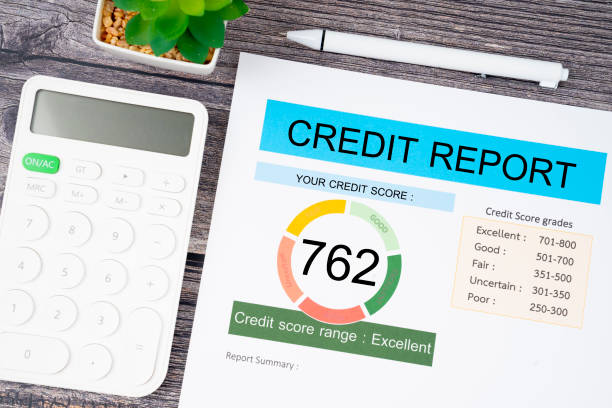Credit catalogues have gained popularity among individuals seeking a flexible payment option for a wide range of products, including clothing, electronics, furniture, and appliances. These catalogues, known as pay monthly catalogues, provide a convenient way to shop and pay over time. However, it’s important to recognize that not all credit catalogues are created equal, especially for those with a less-than-perfect credit history.

In this article, we’ll explore the potential risks and pitfalls associated with bad credit catalogues, taking into account factors such as poor credit rating, bad credit history, and the need for credit checks. We’ll also discuss the benefits and considerations of having a pay monthly catalogue account, the option to buy now and pay later, and the convenience of online catalogue shopping. By understanding the dynamics of monthly catalogues and their impact on individuals with different credit profiles, readers will gain valuable insights to make informed decisions.
Comparison Table
| Catalogue Name | APR | Payment Options | Credit Check Required | User Rating |
|---|---|---|---|---|
| Very Catalogue | 39.7% | Monthly | Yes | ★★★★ |
| Studio Catalogue | 39.9% | Monthly | Yes | ★★ |
| Jacamo Catalogue | 39.96% | Monthly | Yes | ★★ |
This table provides a quick overview of different bad credit catalogues, helping you make an informed decision based on APR, payment options, and user ratings.
Understanding Bad Credit Catalogues
Bad credit catalogues, also known as credit check catalogues, cater specifically to individuals with a poor credit rating or a history of bad credit. These catalogues offer an alternative for those who may not meet the credit checking criteria required for regular catalogues. With features like “buy now pay later” options and the availability of pay weekly catalogues, they provide an opportunity for individuals with a bad credit score to shop for desired items. However, it’s essential to understand the implications involved, such as the impact on credit limits, the potential inclusion of mobile phone contracts, and the need for a credit or debit card to access these catalogues. Careful consideration of the limitations posed by a low credit score is vital when navigating the offerings of a bad credit catalogue.
Exploring the Consequences of Bad Credit Catalogues
When opting for bad credit catalogues, it’s important to consider the potential drawbacks. These include high-interest rates and representative APR, limited credit limits, and negative impacts on credit scores and reports. Additionally, the ease of purchasing can lead to debt accumulation and financial strain if not managed carefully.

Factors to Consider when Choosing a Catalogue with Bad Credit
If you find yourself in a position where bad credit catalogues are your best option, it’s essential to make informed choices. Look for catalogues that offer instant credit approval, flexible payment options (such as monthly or weekly payments), interest-free periods, and manageable payment plans. Understanding the credit limits and the criteria used for credit checks is also crucial.
Alternatives to Bad Credit Catalogues
While bad credit catalogues may seem convenient, exploring alternatives can be beneficial. Consider building your credit and improving your credit score over time. Look into secured credit options or seek financial advice to explore different avenues. Additionally, consider alternative online retailers and payment methods that may better suit your needs.
Tips for Responsible Use of Bad Credit Catalogues
To make the most of bad credit catalogues while minimizing risks, it’s important to adopt responsible financial practices. Budgeting and tracking monthly payments can help avoid unnecessary debt. Whenever possible, aim to pay off balances in full and avoid minimum payments. Carefully review terms and conditions before making purchases, and regularly monitor your credit reports and accounts to stay on top of your financial situation.
- Budget Wisely: Always make more than the minimum payment to reduce your balance faster. This will also help improve your credit score over time.
- Track Spending: Keep a record of your purchases and payments. This will help you manage your finances better and avoid going over your credit limit.
Legal Aspects
Before using any bad credit catalogue, it’s crucial to read and understand the terms and conditions. These will outline your legal obligations, including payment terms and what happens if you miss a payment. Failure to adhere to these terms can result in legal consequences such as additional fees, higher interest rates, or even legal action.
Conclusion
While bad credit catalogues can provide opportunities for individuals with a less-than-perfect credit history, it’s important to proceed with caution. Understanding the potential risks and considering alternatives are crucial steps towards responsible financial management. By making informed decisions and adopting responsible practices, you can navigate the world of catalogues more effectively and work towards improving your financial well-being.
FAQ Section
What is a Bad Credit Catalogue?
A bad credit catalogue is a specialized shopping platform designed for individuals with poor or less-than-perfect credit scores. These catalogues offer a range of products, from electronics to furniture, and allow customers to pay in installments.
How Do Interest Rates Work?
Interest rates in bad credit catalogues can be higher than standard rates. They are often represented as an Annual Percentage Rate (APR), which includes both the interest rate and any additional fees or charges. It’s crucial to understand the APR before making a purchase to avoid unexpected costs.
Additional resources for further information
https://www.stepchange.org/debt-info/money-aware-blog.aspx